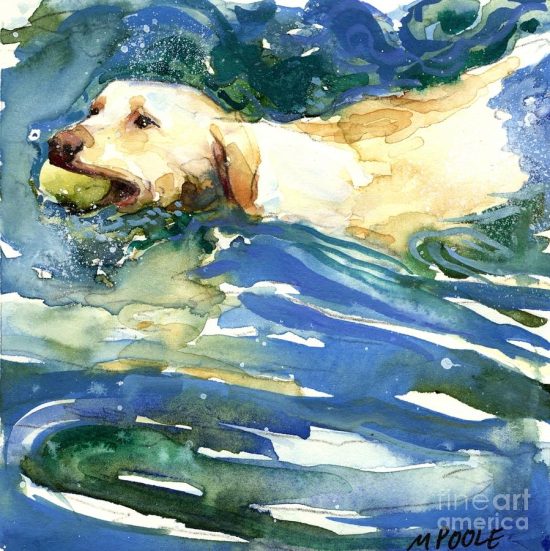
Our post title is misleading, but not entirely off the mark.
Putting aside the importance of a dog’s tail to communicate to other dogs, a tail serves different types of dogs differently. A breed like the Labrador Retriever does indeed use its “otter tail” to assist while swimming. Strong, thick, wider and flatter at the base and and tapering to a point, the Lab’s tail is built to act as a rudder, constantly moving back and forth as the dog swims and helping the dog navigate turns by deflecting water flow directionally.
While it’s not challenging to find a video of a Lab swimming, finding one that focuses on its tail was! We found this clip below, and while not ideal, it shows the dog swishing its tail back and forth as described above:
A Borzoi, on the other hand, does not work in the water, and its tail does not act like a rudder (a mechanism, if you will, that causes a change of direction). What the tail does do for a sighthound is provide balance and stability. When running, the tail switches left for right turns, right for left turns, comes up when hound is slowing, and drops down when accelerating. It acts a bit like a counterweight to help the dog stay balanced and make tighter turns without falling over.
Watch the dog in the video below, or more precisely, watch the dog’s tail. It won’t be easy because it’s not a controlled track, but we think you’ll spot the tail being carried differently as the dog changes directions:
If you have a breed in which the tail plays a critical part in how it does its job, share!
Image: “Lake Effect” by Molly A Poole
http://www.granitedog.com
http://fineartamerica.com
https://www.facebook.com/MollyPooleArtist?fref=ts
